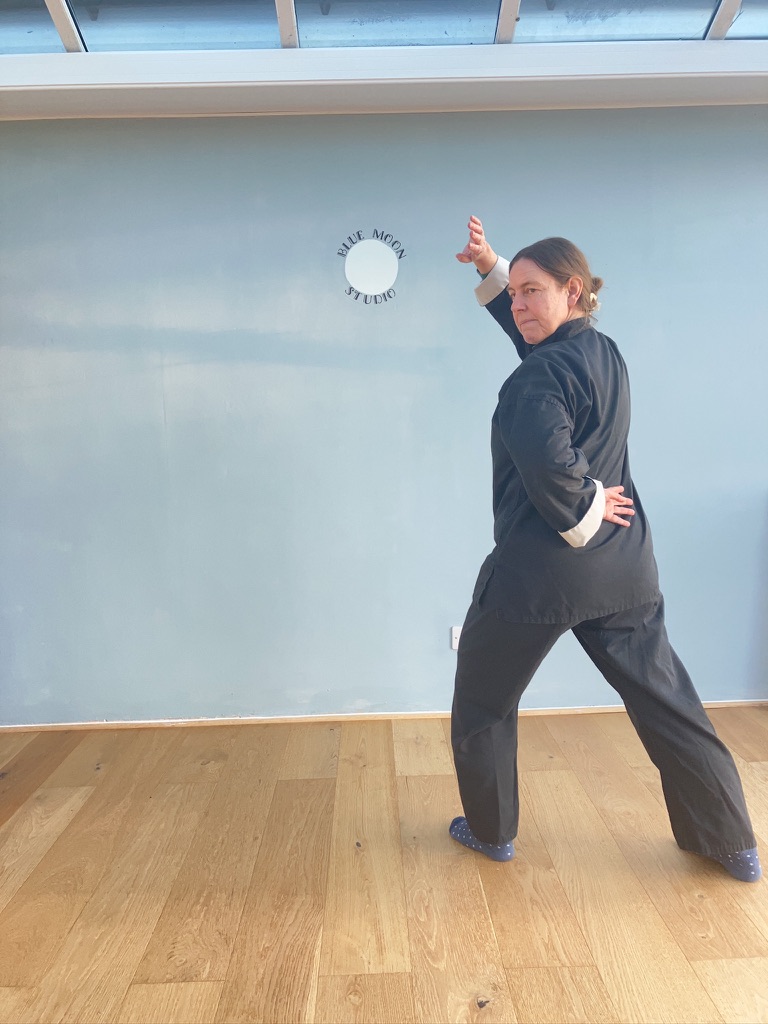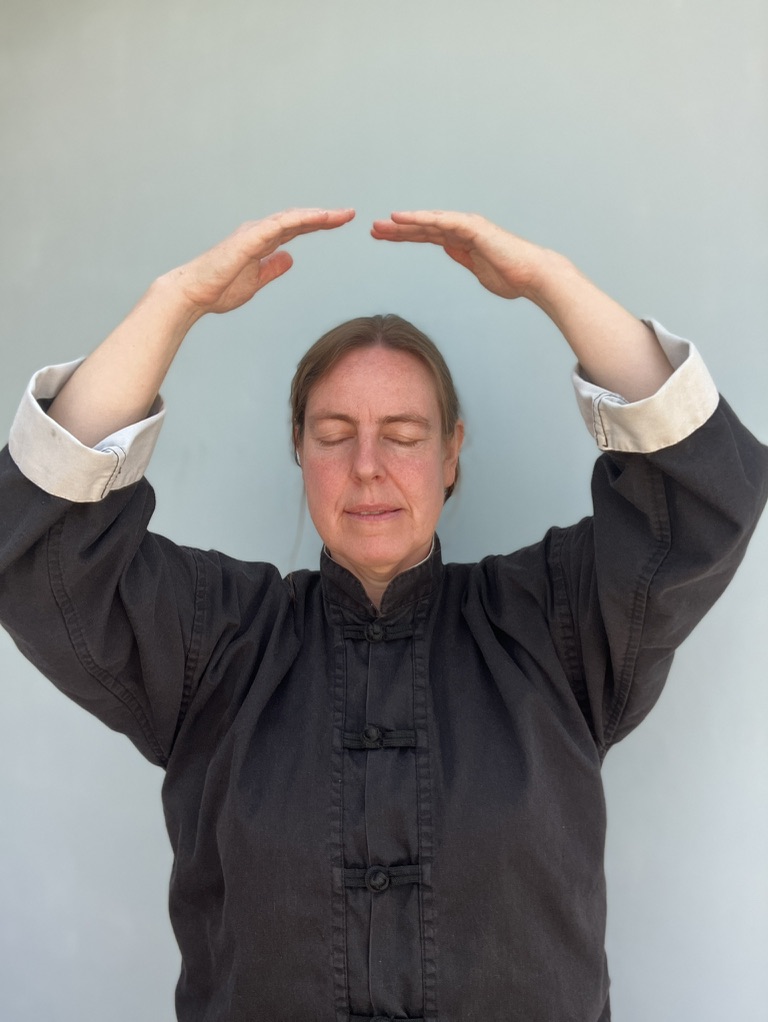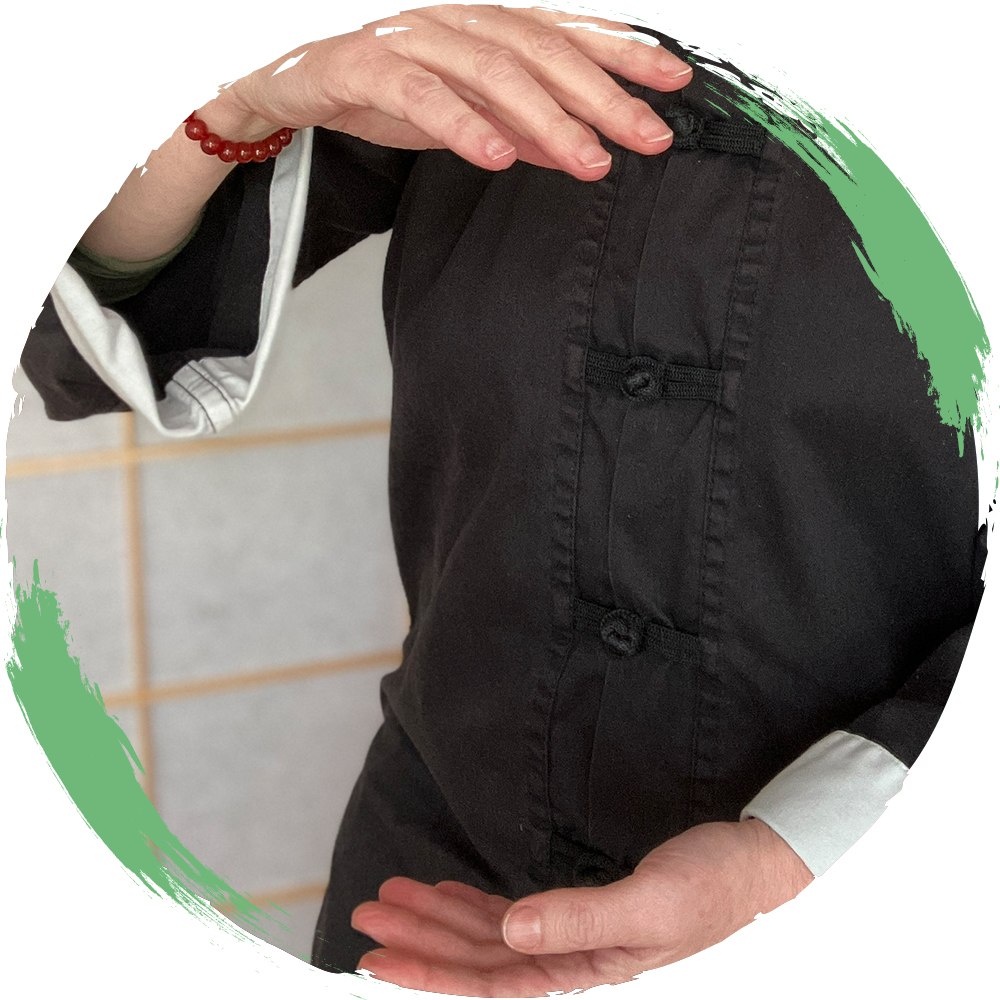About Tai Chi Qi Gong
What is Tai Chi and Qi Gong (say ‘chee gung’)?
It is a natural, holistic, stress-relieving relaxation exercise, working deep into tissues and organs. It looks like a graceful, slow motion dance, and has its origins in Traditional Chinese Medicine for prevention of illness and for longevity.
It stops the fight/flight response by switching off stress hormones and returning you to your normal, relaxed self. Qi Gong re-sets your immune system (often suppressed during stress), improves circulation and has many other benefits.
It uses deep internal movement, full body awareness of joints, fluids, bones, and tissue, circulation of blood and qi (life energy), specific breathing practices, meditation and mindfulness, self-acupressure and internal self-massage through movement to improve and maintain your health without putting stress on the body.
It takes its inspiration from the natural world, imitating the movements of animals such as the lion (for strength), snake (spirals), bird (for balance), fish (fluids) or monkey (relaxed joints).
By getting qi to move smoothly to every part of your body, the body's ability to remain healthy is improved.

What is the difference between Tai Chi and Qi Gong?
There are many similarities and few differences.
Tai Chi is the most well-known and popular moving form of Qi Gong, or Daoyin, with more complex forms (sequences of movements), less internal breath work, focusing more on body alignment, body mechanics, qi mechanics and direction of force (as it is a soft martial art often done for health purposes).
Qi Gong is part of Traditional Chinese Medicine, like acupuncture and herbs. It aims to adjust any imbalances of the body essence (Jing), your vital energies (Qi) and your spiritual/moral self (Shen). It activates acu-points, meridians, channels, blood flow, blood oxygenation (up to 100%), self-massages organs, and more.
Both are extremely interested in improving health, and opening and closing (also known as pulsing) the body to make qi move smoothly through every part of the body. Many of the skills of body movement is used in both.
Students of Tai Chi and Qi Gong have found the following benefits:
- improved balance and co-ordination
- improved blood and lymph circulation
- improved breathing (eg in asthma)
- greater strength from whole body movement, often resulting in for example better ankle and leg strength
- more flexibility through relaxed joints, muscles, tissues and even blood vessels
- vitality and mental focus increase
- emotional stability, reduction in anxiety and improved self-confidence
- improved organ function through internal massage, for example, better heart function
- better immune system function through relaxation response and lymph node self-massage
- better sleep through meditative practices
- mood improvement through feeling of embodiment, return to self, clarity of mind
The most immediate effect of the practice is to calm the mind and naturalise the breathing in order to reduce stress and help the mind and body back into its natural state of balance and hence good health.


What has research revealed?
A lot of interesting research is now looking into the many positive benefits of Qi Gong and Tai Chi, including mild to moderate help with keeping balance in Parkinsons’, better breathing in asthma, better balance for older people, reduced symptoms of depression, beneficial effects on osteoporosis, beneficial effects for high blood pressure and low blood pressure, pain management and much more.
Tai Chi and Qi Gong is becoming a big international player in terms of preventative treatment and health management, health improvement, and although research has been going on for some time, this is now much more in the public awareness.
A new study, published in the North American Spine Society Journal, shows that when combined with meditation, qigong and t’ai chi - related ancient Chinese practices involving flowing movements, careful body posture and breathing - are effective at reducing lowerback pain.
What is Qi?
Much has been written and argued about the nature of Qi, whether it is to be translated as ‘life force’, ‘breath’ (as in ‘Qi Gong’ meaning ‘breath work’), or ‘bio-electricity’. The discussion continues. (The Japanese word for it is 'Ki'.)
Whatever it is, Qi is that which makes you alive. Cultivating it, moving it smoothly through the body, is that which makes you healthy. In the West, Qi is best known in connection with Acupuncture and Shiatsu. It can be directly experienced by the practitioner, and directed through practice.

"I've been suffering with both golfer's elbow and tennis elbow for a few months and at times it has been very painful and debilitating in spite of following NHS exercises.
After just one class with Isabelle both my elbows were hugely better and I was again able to do things that I had been struggling with, like picking up a book. Three weeks later and with just a little practice at home my elbows feel almost 100% better. Thank you Isabelle!"
Painful Joints